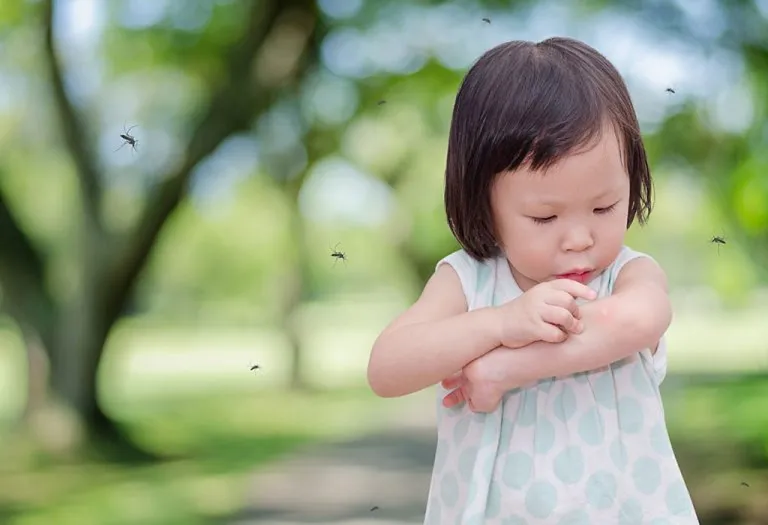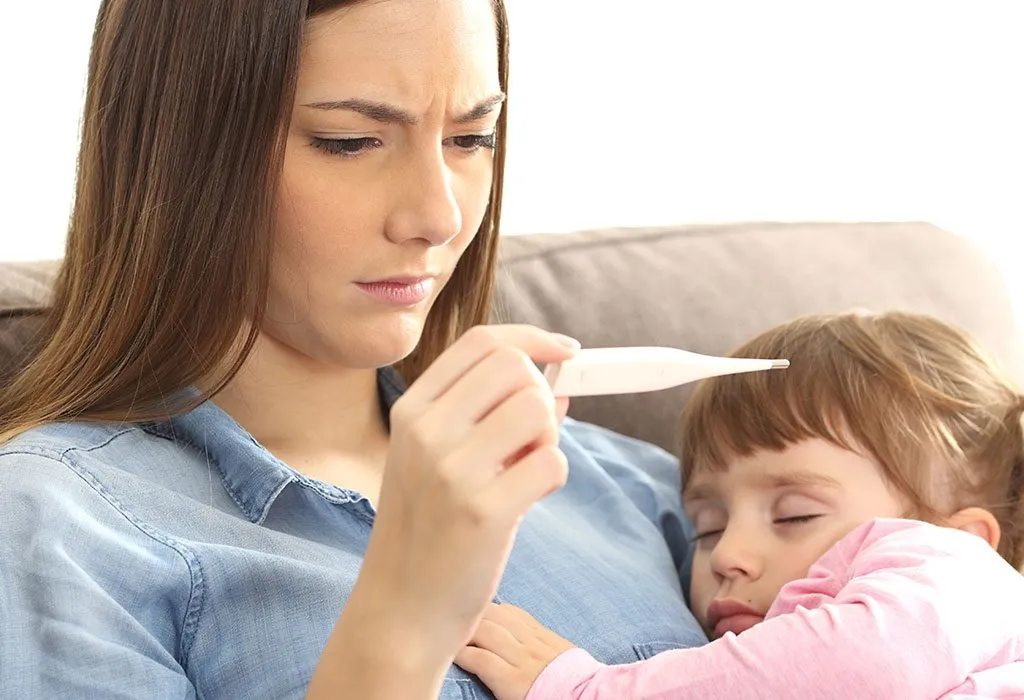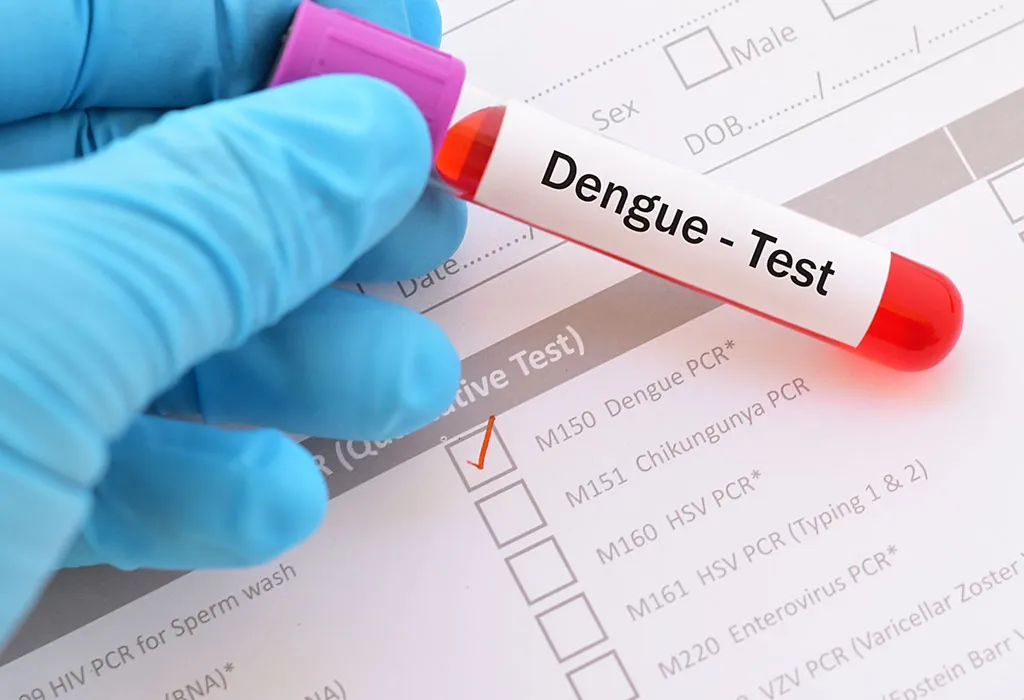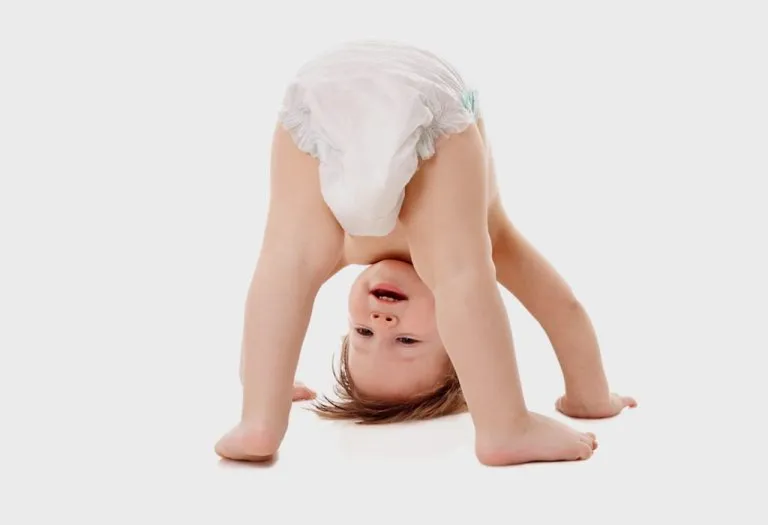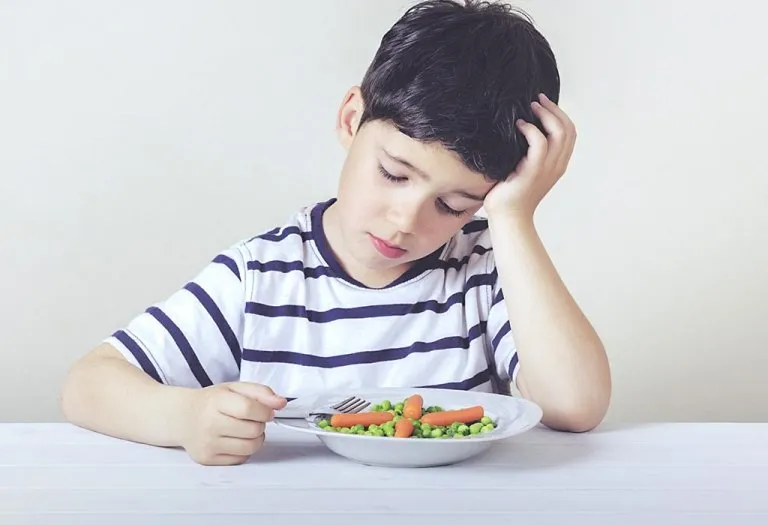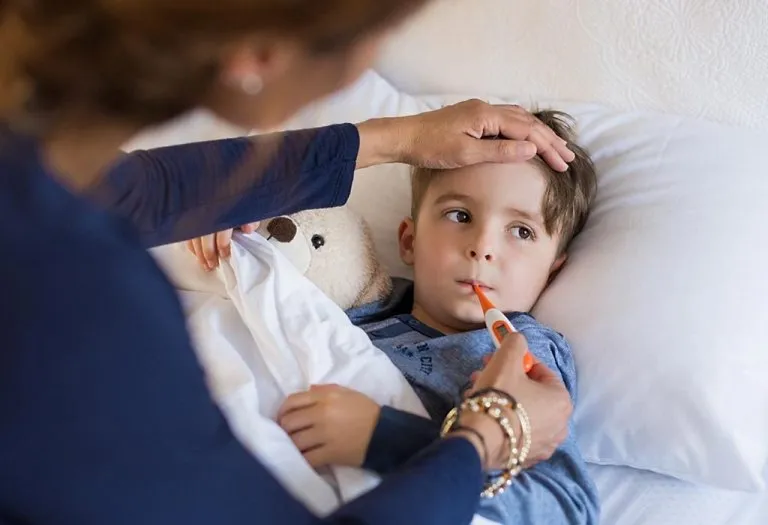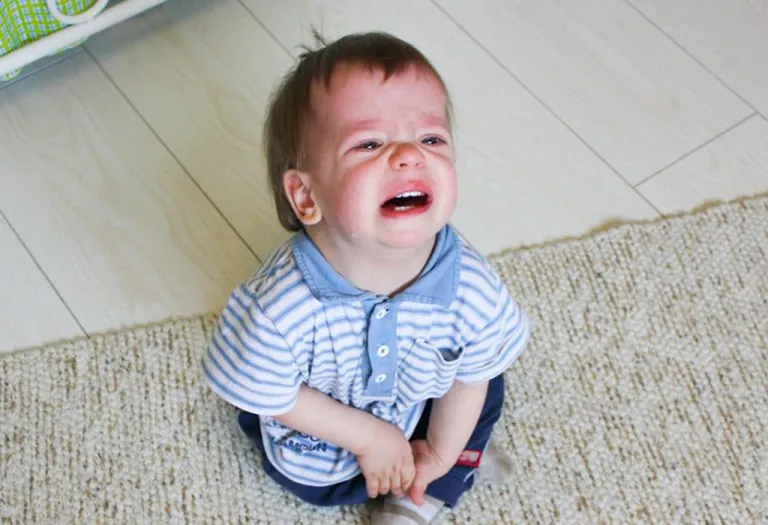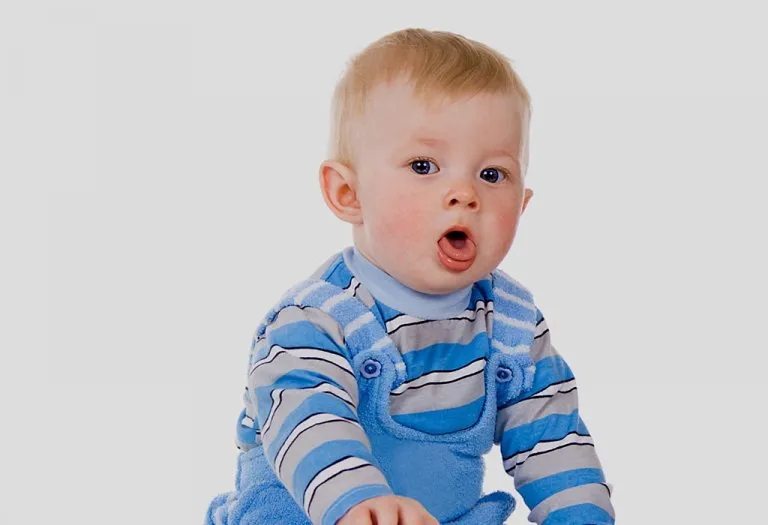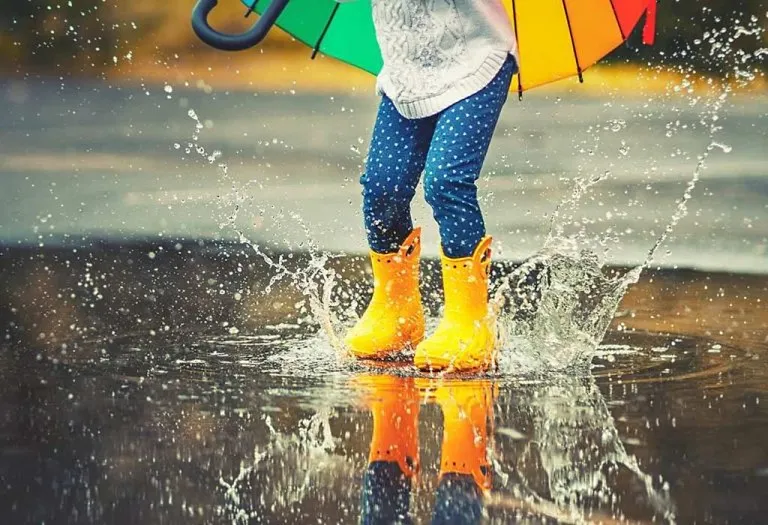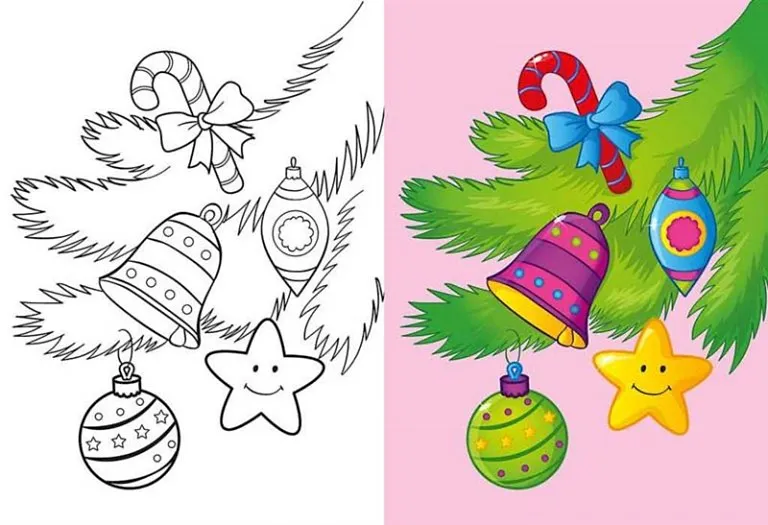Dengue in Infants and Toddlers – Causes, Symptoms, and Treatment

Babies are prone to various illnesses and diseases in the early stages of their lives. Most of them are taken care of by ensuring the diet is appropriate. Therefore, infants should have enough breastfeeding sessions, and older babies/toddlers should have a balanced diet of healthy, hygienic, home-cooked food. However, certain natural aspects, such as pests and insects, cannot always be controlled. Mosquitoes are the primary suspects of these; they find their way easily into our homes and cause havoc.
They are also responsible for causing many diseases, which can be quite harmful. Dengue in babies and toddlers is a mosquito-borne illness and a heavy concern to parents, which requires extra attention and care than regular fever and cough. In this article, we shall talk about dengue symptoms in babies and the causes and treatment options for babies and toddlers. Read on to know more.
What Is Dengue?
Dengue is a mosquito-borne viral disease that spreads through the bite of Aedes aegypti (a female mosquito) (1). The virus causes hemorrhagic dengue fever, headaches, nausea, dizziness, etc. (More about the symptoms in the article below). If not treated well, dengue can manifest in a severe form, which is quite fatal.
Dengue cases are widely known around the country. Infants under one year old have more chances of contracting dengue, which causes it to become severe.
What Is Hemorrhagic Dengue Fever?
When dengue is not treated well, it begins to manifest itself in the form of a fever, which lasts for about a week or so. During this period, the body undergoes a lot of conditions, such as mild, moderate or high fever, intense bleeding, difficulty in breathing, rashes under the skin, nosebleeds, cold, clammy skin, feeling of nausea and incessant vomiting. In some cases, the blood vessels may get damaged, and the platelets drop, which can be life-threatening (2). These are together termed as having contracted haemorrhagic dengue fever.
What Are the Different Stages of Dengue?
Dengue fever typically has three stages. It may be mild for some children and severe for others. Here is the detailed information on dengue’s three stages:
1. Febrile Phase
The febrile phase is the first stage of dengue that initiates with a high fever, which lasts up to 2-7 days. In this phase, the child experiences high fever, joint and muscle pain, vomiting, diarrhoea, and rashes.
If your baby is having bleeding gums and persistently vomiting and breathing heavily, then you should seek immediate medical attention without waiting any further.
2. Critical Phase
The critical phase is one step ahead of the febrile phase with severe dengue. In this phase, you may see some dengue symptoms subsiding along with a drop in the child’s body temperature. This is a critical period that requires observance of any severe complications like blood in the stool or vomit, extreme crankiness, excessive bleeding of the gums or nose, and heavy breathing after 24-48 hours of the initiation of dengue fever (3). In such cases, hospitalisation of the child is recommended to monitor the health of the baby closely.
3. Recovery Phase
In the recovery phase, the dengue fever symptoms start subsiding gradually and the child also starts recovering in observance. However, strict observance on the symptoms are required until the child recovers entirely.
What Causes Dengue and How Does It Spread?
As mentioned earlier, the variant of the mosquito that spreads the dengue virus is Aedes aegypti. This mosquito can be easily identified by the white or silver stripes/scales on its body. The scales resemble the stripes on a tiger; therefore, it is also called a female tiger mosquito. The mosquito transmits the virus to humans when it carries the virus and bites them to drink the blood.
One of the specific tendencies of these mosquitoes is their affinity for warm and humid climate, which provides them with the ability to breed easily. This is why the onset of monsoons and the innumerable puddles of water lead to breeding of these mosquitoes quickly and risk the spread of dengue. Another behaviour to be factored in is their tendency to feed and bite other humans in the daytime. Most of the mosquitoes from other variants get active towards the evening and night and begin biting then.
Dengue is not contagious among human beings since it can infect a person only when a mosquito carrying that virus ends up biting the person (1).
Symptoms of Dengue in Babies and Toddlers
We’ve already mentioned some dengue symptoms in infants in the article above, but here is a detailed list of symptoms you must look out for if you suspect your child could have dengue fever (4) (5).
- Fever that appears suddenly and reaches high temperature very soon.
- The eyes start hurting a lot, especially in the region behind the eyeballs.
- Frequent headaches that are quite debilitating and severe.
- Constant feeling of nausea and dizziness, leading to discomfort, too.
- Frequent and incessant vomiting, which is sometimes even uncontrollable.
- Increasing body aches that highly affect the muscles and joints.
- The appearance of dengue rashes on babies following the fever.
- Nosebleeds in mild quantities.
- At times, babies can also experience bleeding in the gums.
- Few babies may have trouble breathing, which may cause them to wheeze or breathe rapidly.
- The discomfort and irritability caused by the fever and body aches.
- Sick infants become fussy and lose their appetite.
- Excessive sleepiness or difficulty waking
- Cold hands and feet
- Absence of urine for six hours
Once babies or toddlers show signs of Dengue, you need to deal with it a tad bit differently. It is highly recommended that you visit a paediatrician immediately to get the treatment started, but you must also know how to deal with the symptoms until a diagnosis is made. We will talk more about that below.
How to Deal With Symptoms of Dengue in Infants and Toddlers?
Intensely high temperature, body rashes, body aches, crying and vomiting are all strong signs of dengue. There are a few important things you must remember that can help you deal with the symptoms of dengue in your little one.
- There is no specific cure for dengue, although there are a number of medications available that help get the fever down and manage nausea. If prescribed and taken in the recommended dosages, these medicines can consequently assist in taking care of dengue, too.
- In any case, no medication that is meant for inflammations should be administered. They could further reduce the platelet count of your baby and result in a condition even more severe than before.
- You must take your baby to the hospital immediately to get the diagnosis made and treatment started as soon as possible.
On that note, let’s take a look at how the diagnosis is made and what the possible treatment options are for dengue in babies and kids.
What Are the Complications of Dengue Fever in Babies and Toddlers?
In worse cases, dengue fever in infants and toddlers could cause severe complications, including (6):
- Liver damage
- Pneumonia
- Febrile seizure (7)
- Cardiomyopathy (heart disorders)
Diagnosis of Dengue
- One of the first things the doctor will do is to undertake a blood test of the baby. Blood samples will be acquired and sent to the lab to check for infections.
- The number of platelets in the blood is another marker for dengue. Any person contracting dengue suffers a huge drop in the platelet count that results in extreme weakness in the body.
- If your baby has a fever, the temperature of the baby would also be noted. An extremely high temperature that rises very quickly is a strong sign of the presence of dengue.
- The paediatrician might ask you to recall how the baby fell ill, and when did you first notice the temperature and how quickly it had risen.
- The paediatrician might also ask you about the surrounding conditions of your home or if you’ve recently travelled to a place where the baby was exposed to mosquitoes.
- Frequent vomiting could lead to dehydration. The paediatrician might recommend undertaking certain procedures to ensure it doesn’t cause further complications.
Dengue Fever Treatment for Babies and Toddlers
As mentioned before, there is no cure for Dengue. There are, however, multiple ways to reduce the symptoms, bring relief, and help the body fight the infection.
Taking enough rest is paramount. The body undergoes a lot of stress, and it needs enough rest to be able to recover. Frequent and incessant vomiting could lead to dehydration; thus, it is important for your child to remain hydrated (8). Therefore, the breastfeeding cycles will have to be increased for infants. For older babies, the fluid intake needs to be increased. In case your baby refuses to feed or is too weak to swallow food, the paediatrician might opt for intravenous nourishment alternatives to keep the electrolytic and hydration levels on point.
In order to combat fever, acetaminophen might be given. Consult a paediatrician before giving it to your baby, though. Also, stay away from administering any form of ibuprofen or aspirin (7). At times, even after the fever goes down, your baby might vomit incessantly. This could mean the onset of haemorrhagic dengue fever, and you must take your baby to the hospital immediately.
Tepid sponge baths using water at 85 to 90°F (29.4 to 32.2°C) also helps. It is not advised to avoid cold water as it could cause the child to shiver. Also, the American Academy of Pediatrics advises to strictly avoid using rubbing alcohol to treat fever in your child as it could be absorbed or inhaled by your infant and lead to severe conditions like coma (9).
Dengue can add to the stress levels as there is no specific cure on it. However, there are ways dengue can be prevented. Read below to know more.
How to Prevent Dengue?
The UNICEF recommends a few ways you can prevent dengue (10):
- Mosquitoes that spread dengue breed in fresh and stagnant water; therefore, it is important to ensure that there is zero presence of any uncovered stored water bodies in your house or in the surroundings close to your home. This includes terraces, gardens, and even your washrooms.
- Mosquito activity peaks 2 hours after sunrise and just before sunset. Children should avoid outdoor activity during peak mosquito hours.
- Make use of mosquito repellents in the form of mats or vaporisers indoors to keep mosquitoes at bay. Using mosquito repellent creams and sprays might also be quite effective. Creams and sprays are perfect for keeping kids safe from mosquitoes when outdoors.
- Playing around with dirt and mud can make the body attract mosquitoes even more since mosquitoes tend to hover around in moist areas. Advise your kids to avoid playing certain games/sports or clean up immediately to avoid attracting the mosquitoes.
- Make sure your windows have a permanent mesh or make use of sliding mesh windows to prevent mosquitoes from entering the house.
- Dress your children in clothes that cover their bodies completely.
- Sleeping in beds that have mosquito nets is the best way to have an undisturbed and safe sleep.
When to Consult the Doctor
If you notice the following severe dehydration signs in your child, immediately consult a doctor or visit the emergency ward of the hospital (11):
- Dry mouth, lips, and tongue
- Extreme fatigue
- Sunken eyes
- Cold hands and feet
- No tears while crying
- Reduce urination
- Sunken soft spot on the head
FAQs
1. Are mosquito repellents safe for babies and toddlers?
Some mosquito repellents are safe for babies and toddlers. Therefore, parents must be careful while purchasing a mosquito repellent. Repellents containing upto 30% DEET is safe for babies and children over two months, while repellents having Picaridin are safe for kids over 12 months of age (12).
2. Is dengue a recurring infection?
It is possible for an individual to get dengue infection again, three to four times, from various different dengue virus strains (5). Typically, the second or subsequent infection is caused by other strains of the dengue virus, and the following infections may be more serious than the first one.
3. Is there any vaccine available for dengue?
Currently, there is no vaccine for dengue licensed to be used for infants and toddlers.
4. Should I bathe my baby during dengue fever?
Heathcare professionals advise refraining from bathing babies or toddlers until the dengue fever comes down. Apparently, you can do the tepid sponge baths with lukewarm to cool water to bring down their fever temperature (11).
5. What are platelet counts, and why are they important in dengue?
Platelets help in blood clotting, and their levels often drop in dengue, increasing the risk of bleeding. Doctors monitor platelet counts closely during dengue to detect early signs of dengue hemorrhagic fever, a serious complication that may need hospitalisation.
Dengue can very quickly cause the health of a baby to deteriorate if left unchecked. With some simple measures, it is possible to prevent dengue to some extent. However, if your kid hasn’t been keeping well, keeping an open eye for signs of dengue and taking the right actions can help your baby heal faster.
References/Resources:
1. Cleveland Clinic – Dengue Fever
3. NHS – Dengue
4. REAN Foundation – Dengue Alert: How to Spot Dengue Symptoms in Infants
5. WHO – Dengue and severe dengue
6. StatPearls Publishing – Dengue Fever
9. American Academy of Pediatrics – Treating Your Child’s Fever
10. UNICEF – Dengue: How to keep children safe
11. CDC – Manage Dengue in Infants
12. Nemours KidsHealth – Are Insect Repellents With DEET Safe for Kids?
Also Read:
Dengue in Children
Chikungunya in Kids
Home Remedies of Dengue and Malaria for Kids
Malaria in Children – Causes, Symptoms & Treatment
Was This Article Helpful?
Parenting is a huge responsibility, for you as a caregiver, but also for us as a parenting content platform. We understand that and take our responsibility of creating credible content seriously. FirstCry Parenting articles are written and published only after extensive research using factually sound references to deliver quality content that is accurate, validated by experts, and completely reliable. To understand how we go about creating content that is credible, read our editorial policy here.






